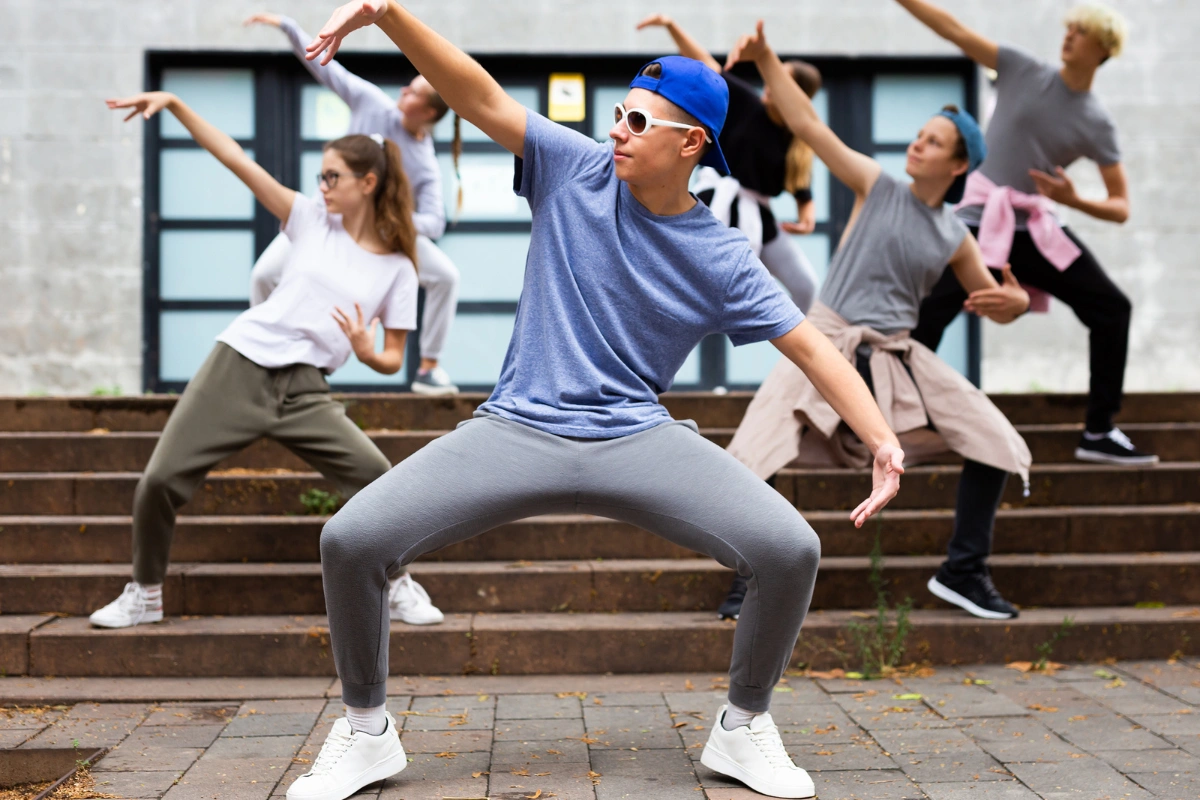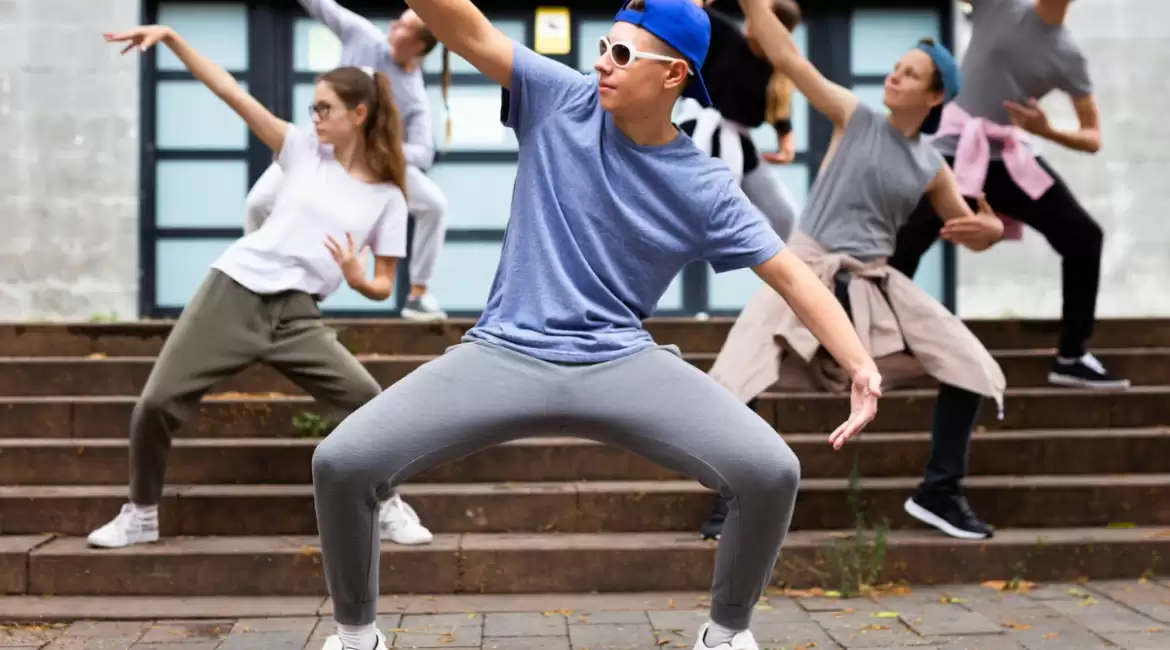Whether you’re a novice dancer or a seasoned performer, setting and achieving dance goals is essential for growth and fulfillment in the world of dance. In this guide, we’ll explore practical strategies and insights to help you define your dance aspirations, create actionable plans, and stay motivated on your path to success. Let’s embark on this transformative journey together, where your dance goals become not just dreams, but tangible milestones waiting to be conquered.
What do you love about dancing?
What aspects of dancing ignite your passion? To craft a dance goal that truly resonates with you, it’s essential to first reflect on what aspects of dance you genuinely enjoy or find inspiring.
Have there been moments in the past that left you awestruck, thinking, “Wow, that’s incredible!” or “This is unbelievably fun!”?
Take a closer look at what precisely elicited those reactions from you. Does the idea of choreographing your own routines excite you?
Have you ever witnessed someone completely owning the dance floor in a battle and thought to yourself, “Someday, I’ll be just as good”?
Perhaps you’re drawn to the idea of competing or organizing dance events, or maybe you’re intrigued by the prospect of media coverage within the dance community.
Whatever it may be, that electrifying feeling you experience is the driving force behind setting and achieving your dance goals. Once you’ve identified your “why”…

Set one specific, long term dance goal
Crafting a specific, long-term dance goal requires careful consideration and adherence to the principles of S.M.A.R.T. goal setting:
- Specific: Clearly define what you aim to achieve in your dance journey. This involves outlining the “who, what, when, where” aspects of your goal.
- Measurable: Establish criteria to gauge your progress and determine when you’ve successfully achieved your goal. This could involve quantifiable metrics or observable milestones.
- Attainable: Ensure that your goal is within reach and feasible given your current skills, resources, and circumstances. It should challenge you without being overwhelmingly unrealistic.
- Realistic: Consider the practicality of your goal in relation to your abilities, commitments, and available time. It should be something you genuinely believe you can accomplish with dedication and effort.
- Timely: Set a timeframe for accomplishing your goal to provide a sense of urgency and focus. This helps prevent procrastination and encourages consistent action towards your objective.
For instance:
- Example 1: “My long-term goal is to choreograph and produce a full-length dance showcase, blending contemporary and hip-hop styles, with a cast of diverse dancers, to be premiered at a local theater by the end of next year.”
- Example 2: “My goal is to master multiple street dance styles, including Popping, Locking, and Breaking, through consistent training sessions over the next two years, culminating in a performance at a renowned dance festival.”
- Example 3: “My objective is to establish my own dance studio specializing in urban choreography and street dance techniques within the next five years, providing a creative space for aspiring dancers in the community.”
Each of these examples embodies the principles of S.M.A.R.T. goal setting, offering a clear direction and roadmap for achieving significant milestones in your dance journey. Once you’ve defined your main goal…

Set some short term dance goals
Creating short-term dance goals serves as stepping stones towards your overarching S.M.A.R.T. goal, providing a roadmap for incremental progress along your journey. By breaking down your main goal into smaller, manageable tasks, you can strategize and focus on specific actions to propel you forward.
Example 1:
- Dedicate three sessions per week to train and improve flexibility, focusing on targeted stretches and exercises.
- Research costume and production expenses to determine a specific dollar amount needed for your upcoming showcase, and establish a savings plan to set aside the required funds.
Example 2:
- Devote each month to mastering a different technique within your chosen dance style, starting with Popping. This could involve studying tutorials, attending workshops, and practicing regularly to hone your skills.
- Explore local dance communities and events to find Popping sessions or workshops where you can learn from experienced dancers and immerse yourself in the culture.
Example 3:
- Enroll in beginner dance classes for the current month to build foundational skills and confidence in various dance styles.
- Plan to transition to intermediate-level classes the following month, challenging yourself with more complex choreography and techniques to further enhance your abilities.
By setting these short-term goals and outlining specific actions to achieve them, you can effectively progress towards your ultimate dance aspiration while maintaining focus and momentum along the way. Remember to periodically reassess and adjust your goals as needed to stay aligned with your evolving skills and priorities.
WRITE your dance goals down!
Writing down your dance goals is a powerful step towards manifesting them into reality. By putting pen to paper, or fingers to keyboard, you solidify your commitment and create a tangible reminder of your aspirations. Here’s why and how you should jot down your dance goals:
- Enhanced Accountability: When you articulate your goals in writing, you hold yourself accountable for achieving them. It’s like making a promise to yourself that you’re determined to keep.
- Increased Clarity: Putting your goals into words helps clarify your intentions and provides a clear direction for your dance journey. You’ll have a concrete roadmap to follow, making it easier to stay focused amidst distractions.
- Daily Reminder: Whether you jot them down in your phone’s notes, keep a journal dedicated to your dance endeavors, or write them on sticky notes placed where you’ll see them every day, having your goals visible keeps them at the forefront of your mind.
- Positive Framing: When writing your goals, frame them in a positive light. Instead of focusing on what you want to stop doing, emphasize what you want to achieve. For instance, rather than saying “Stop being so shy,” rephrase it as “Introduce yourself to more people in class.” This positive language empowers you and fosters a growth mindset.
So, take a moment to articulate your dance goals in a positive, affirming manner. Whether it’s mastering a new move, building confidence, or achieving a specific performance milestone, write them down where you’ll see them regularly. Watch as your written aspirations fuel your determination and guide you towards success in your dance endeavors.

Be realistic and flexible with your dance goals
Being realistic and adaptable with your dance goals is key to navigating your journey effectively. Setting specific, measurable timelines provides clarity and accountability, making it evident when you’ve accomplished each milestone.
For instance:
Example 1: “My overarching goal is to produce my first full-blown contemporary x hip hop concept video, featuring a themed narrative and a cast of talented dancers, by the end of 2018. To achieve this, I’ve established specific deadlines for key tasks:
- Finish choreography by October 17th: Dedicate focused time to complete the choreography, recording it for reference and refinement.
- Save x amount of dollars by November 1st: Implement a savings plan to cover expenses related to costumes, props, and production.
- Month of November: Reserve rehearsal space at Snowflake Eyeglass Studio for Thursdays and Sundays, 8 pm – 11 pm: Secure dedicated rehearsal time and space to fine-tune the routines with the cast.
If you’re inclined towards visual aids, consider mapping out these deadlines on a monthly calendar. This provides a comprehensive overview of your timeline, allowing you to track progress and manage your remaining time effectively.
It’s crucial to remain flexible with your dance goals. Acknowledge that not everything will unfold exactly as planned, and allow room for adjustments, mistakes, and improvisation along the way. Embrace the unexpected detours as opportunities for growth and learning.
Above all, keep the joy of dancing alive throughout the process. Maintain a lighthearted attitude, stay open to new experiences, and celebrate the journey as much as the destination. By balancing realism with flexibility and a positive mindset, you’ll navigate your dance goals with grace and resilience.
Celebrate your accomplishments
Celebrating your accomplishments in dance is essential for reinforcing your progress and maintaining motivation. By acknowledging and honoring your achievements, you not only affirm your hard work but also cultivate a positive mindset that propels you forward in your dance journey.
Here’s why celebrating is important:
- Recognition of Effort: Taking the time to celebrate acknowledges the effort and dedication you’ve invested in reaching your dance goals. It’s a way of recognizing your commitment and perseverance.
- Boost in Confidence: Celebrating your accomplishments boosts your confidence as a dancer. It validates your skills and abilities, reminding you of your competence and capability to tackle new challenges.
- Positive Reinforcement: Celebrating serves as positive reinforcement, reinforcing the behaviors and actions that led to your success. It reinforces the belief that your efforts yield results and encourages you to continue striving for excellence.
- Motivation for Future Goals: Celebrating your achievements instills a sense of accomplishment and satisfaction, motivating you to set and pursue new dance goals. It fuels your ambition and enthusiasm, inspiring you to keep pushing yourself to new heights.
So, when you achieve a dance goal, take the time to celebrate! Whether it’s treating yourself to a special dance class, organizing a small gathering with friends to share your accomplishment, or simply taking a moment to reflect and appreciate your progress, celebrate in a way that resonates with you.
By celebrating your accomplishments, you not only honor your hard work but also set the stage for continued growth and success as a dancer.
Summary
The guide emphasizes the importance of specificity, measurability, attainability, realism, and timeliness in goal setting, following the principles of S.M.A.R.T. goals. Readers learn how to break down their overarching aspirations into actionable steps and navigate potential obstacles with resilience and adaptability. Through practical strategies and encouragement, dancers are empowered to celebrate their accomplishments and maintain momentum on their dance journey. With this guide as their companion, dancers can confidently pursue their dreams and reach new heights of skill and artistry in the world of dance.


Leave a reply